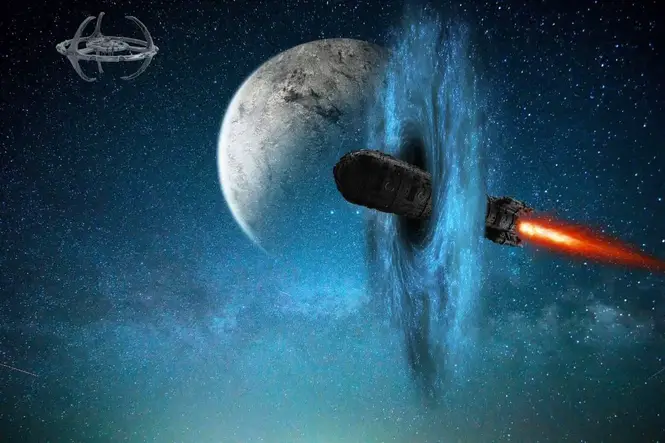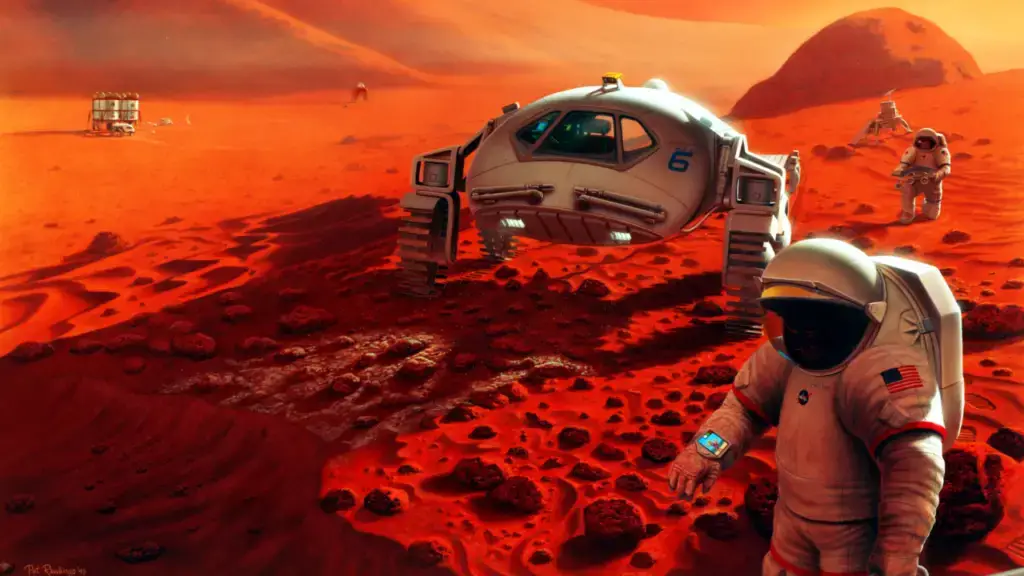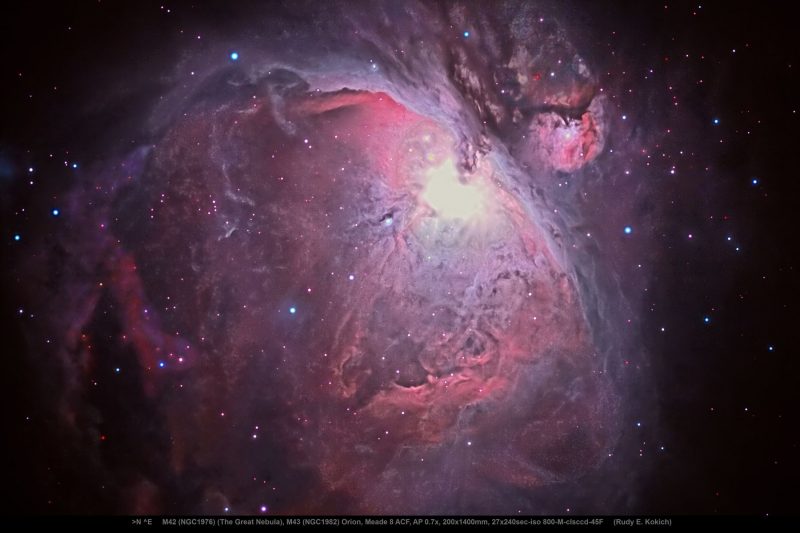We have succeeded in sending several rovers and spacecraft to planets within the solar system. But when do we take the bold step outside the solar system to explore interstellar space?
You are about to find out the possibilities of humans commencing with interstellar travel in the nearby future. You will also learn the meaning of interstellar travel, the benefits of interstellar travel, and the problems stopping us from commencing with this futuristic journey.
What Is Interstellar Travel?
Interstellar travel is a space mission whereby crewed or uncrewed spacecraft travels from one planetary system to another system within the same galaxy. This implies that a highly advanced rocketry system is required to accomplish this mission.
Because of long-distance between planetary systems, it will be extremely difficult to cover this distance within a short duration. Aside from distance, several other challenges make people think that interstellar travel is literary impossible in the future.
Is Interstellar Travel Possible?
The idea of exploring interstellar space may appear like fantasy to many people. However, scientists are already seeing the possibilities of humans reaching this milestone in the future. But there are complex challenges that we are yet to solve before thinking of traveling beyond the solar system to explore interstellar space. Scientists are already seeing the technical possibilities of starting interstellar travel in the future.
However, achieving this milestone will appear quite more complicated for scientists, engineers, and astronomers with our most sophisticated space technologies. Interstellar travel requires strategic planning and great financing from any organization to accomplish success.
Keep in mind that we are talking about a journey to a space world outside the planetary system. This implies that highly advanced propulsion will be required to attain this milestone. Aside from a highly advanced propulsion system, astronauts that will participate in this spaceflight has to prepare their mind to meet the unknown in the deep space. However, we may decide to send robots with highly advanced artificial intelligence backup to ensure the success of this unique space mission.
Have We Ever Reached Interstellar Space?
As many people continue to see the impossibilities of reaching interstellar space, NASA has succeeded to deliver a special gift to our interstellar neighbors. The space agency launched the voyager 1 in 1977 with a prerecorded message about the existence of life on earth in space. The spacecraft commences its journey into the deep space like every other spacecraft.
However, it reached a great height in the 21st century. In August 2012, Voyager 1 crossed the edge of the solar system and entered interstellar space. This great milestone attained by this spacecraft created a new history for humanity. With this feat, Voyager 1 became the first spacecraft to reach interstellar space.
Keep in mind that the voyager left earth in 1977, and within 35 years of travel, it embraced the Interstellar space. You may be thinking that we can achieve interstellar travel within a short period. However, we can only accomplish interstellar travel when Voyager one successfully made it to another planetary system.
So when do you think that the voyager will reach another planetary system? According to NASA, it will take the Voyager another 40,000 years to reach another planetary system with the speed it explores interstellar space. So reaching the interstellar space is the first milestone, but reaching another star is what completes your journey and makes it interstellar travel.
What Propulsion System Will Be Used For Interstellar Travel?
Before we conclude on the possibilities of starting interstellar travels in the future, we must look at the propulsion system that will be used for this unique space mission. Even as space agencies are preparing to send humans to Mars, they are already working on several propulsion systems that will guarantee the success of reaching mars within a specific period.
If we want to achieve interstellar travel, we must not consider any propulsion system that we use currently to explore space. We must be technologically advanced to effectively deploy the use of other sophisticated propulsions in reaching space. Many scientists are suggesting that antimatter propulsion systems could be used to achieve this milestone.
However, working on this technology may appear practically impossible with our recent understanding of technology. Even future scientists and experts may find it difficult to effectively deploy the use of antimatter propulsion in reaching a new space world.
If we could not attain this milestone with antimatter rocketry technology, we could opt for ion propulsion. Ion propulsion is highly advanced and can accelerate a spacecraft at extremely high velocities. Keep in mind that we need to propel our spacecraft at extremely high velocity to reduce our travel duration to another planetary system.
Are We Close To Interstellar Travel?
Starting interstellar travel is a complex task to accomplish. However, our interest and desire to explore a new space world will surely push us to begin interstellar travel in the future. Based on our current technologies, we are no way closer to starting interstellar travel.
Before we think of exploring interstellar space, we must have the technology to reach every part of the solar system within a specific period. The solar system is vast. However, its vast nature cannot stop the future civilization from reaching the new space world.
The Voyager 1 has remained the only manned object that has reached interstellar space. But this milestone does not mean that we are close to starting interstellar travel. Keep in mind that we will have the ability to reach another planetary system before we can consider ourselves fit for interstellar travel. Based on our current level in space exploration, we are far from reaching this historic moment.
Before we can comfortably commence with interstellar travel, we must solve every problems or challenge that may face the crewed or uncrewed spacecraft sent on this journey. So the faster we solve these problems the closer we will get to starting interstellar travel.
If future civilization manages to solve these challenges, they may have to send robots in an uncrewed spaceship to explore interstellar space before sending humans. Just like we did during the historic moon landing mission, future astronomers and scientists will commence interplanetary travel with uncrewed missions to learn more about exploring interstellar space. Sending robots will give future scientists the clue on how to sustain humans in this new hazardous environment.
What Are The Benefits Of Interstellar Travel?
You may be wondering why humans will consider exploring interstellar space when we have a lot of mysteries to uncover about our planetary system. Reaching interstellar spaces actually comes with numerous benefits for humanity.
From testing our technological advancement to searching for our alien neighbors, interstellar travels actually have a lot of benefits to offer us. The benefits of interstellar travels consist of the following.
1 Connect with another planetary system
The solar system consists of 8 planets, 171 moons, and numerous celestial bodies including asteroids. However, only a few celestial bodies are capable of hosting life, if we can terraform them. But if we explore interstellar space, we will connect with other planetary systems like the alpha Centauri and discover new environments for mankind.
Keep in mind that interstellar space is vast and comprises billions of stars and billions of planets. So if we become technologically advanced to reach other planetary systems, we will surely find a new habitable zone to extend life.
2. Test our technological advancement
Our ambition has relied on propelling a spaceship at light speed. Even if we fail to reach this milestone in nearby future, we should be able to propel a spaceship at 20 or 50% of light speed. When we become technologically advanced to reach this milestone, we may decide to explore the interstellar space to test our technological advancement.
Currently, NASA is working on EM Drive that will propel a spaceship into the deep space without the need for fuel. Aside from testing this advanced technology in the deep space, we have other sophisticated technology that we can send into the send to interstellar travel in the future.

3. Connect with alien neighbors
We are yet to tell if we are alone in this universe or have other civilizations living in distanced planetary systems. If we commence with our interstellar travel, we can study other solar systems and extend our search for alien life.
4. Spread our life and culture across the Galaxy
The milky way galaxy is made up of billions of planetary systems. Even if another civilization exists out there, they will surely have a unique and different culture and lifestyle from ours.
Commencing with interstellar travel will give us the ability to spread our uniqueness across the galaxy and connect with other civilizations, that is if there are any.
5. Increase our survival chances
No one could predict the future of humans on earth. Scientists have predicted that we will never remain on earth forever. According to a popular quote made by Carl Sagan, “all civilization becomes either spacefaring or extinct.“ The scientist has already seen the benefits of interstellar travel before he coined his famous quote.
Even if earth survives asteroids’ impact in centuries to come, we may not survive the devastating impact of the Sun’s expansion. However, we can give ourselves a second chance through interstellar travels.
What Are The Problems Of Interstellar Travels?
Interstellar travels could have become reality if not for several challenging that is stopping us from reaching this milestone. Starting interstellar travel requires a lot of planning from the space agencies involved in the mission. From space technologies to financial budgets, the problems of interstellar travel consist of the following.
1 Space technologies
Our current space technologies are not sophisticated enough to take us to another planetary system. Keep in mind that the distance between our home planetary system and other planetary systems is so vast. So we need unique space technologies to reach this milestone. Currently, NASA and other space agencies are working on sending humans to Mars. Reaching
Mars is the first stepping stone towards reaching a distanced planetary system. Keep in mind that manned missions to Mars have been delayed as the space agencies are still researching more advanced technologies to sustain the martian’s astronauts on the red planet. So, if we succeed in sending humans to Mars, we may be closer to exploring interstellar space.
2. Distance
The closest planetary system to earth is a three-star system known as the Alpha Centauri. The distance from the earth to this closest planetary system is 4.367 light-years away. With this distance, it will take about 40 trillion kilometers to reach Alpha Centauri.
A spaceship traveling at 250,000 kilometers per hour will spend 18,000 before it arrives at the next planetary system. So distance is challenging fact humanity will face when hoping to explore the next planetary system.
3. Radiation
Astronauts participating in this space mission will be explored to long-term ionization, which can be very devastating. So space agencies must feature how to protect astronauts from radiation before sending them on a mission.
4. Health impact
The mental health of astronauts participating in this space mission must be highly considered. Keep in mind that traveling to another planetary system is actually a long-term journey. So astronauts participating in this mission must be provided with a smooth ground to ensure that their mental health is in perfect condition when they arrive in the new space world.
Conclusion
The thought of reaching a new space world appears technically impossible a few decades ago. However, we are beginning to see the possibility in recent times. If we successfully colonize our own planetary system in a few centuries to come, reaching interstellar space will surely become our next target.
We are not giving up until we become technologically advanced to reach another planetary system. Do you think we will ever become interstellar travelers in the future?





